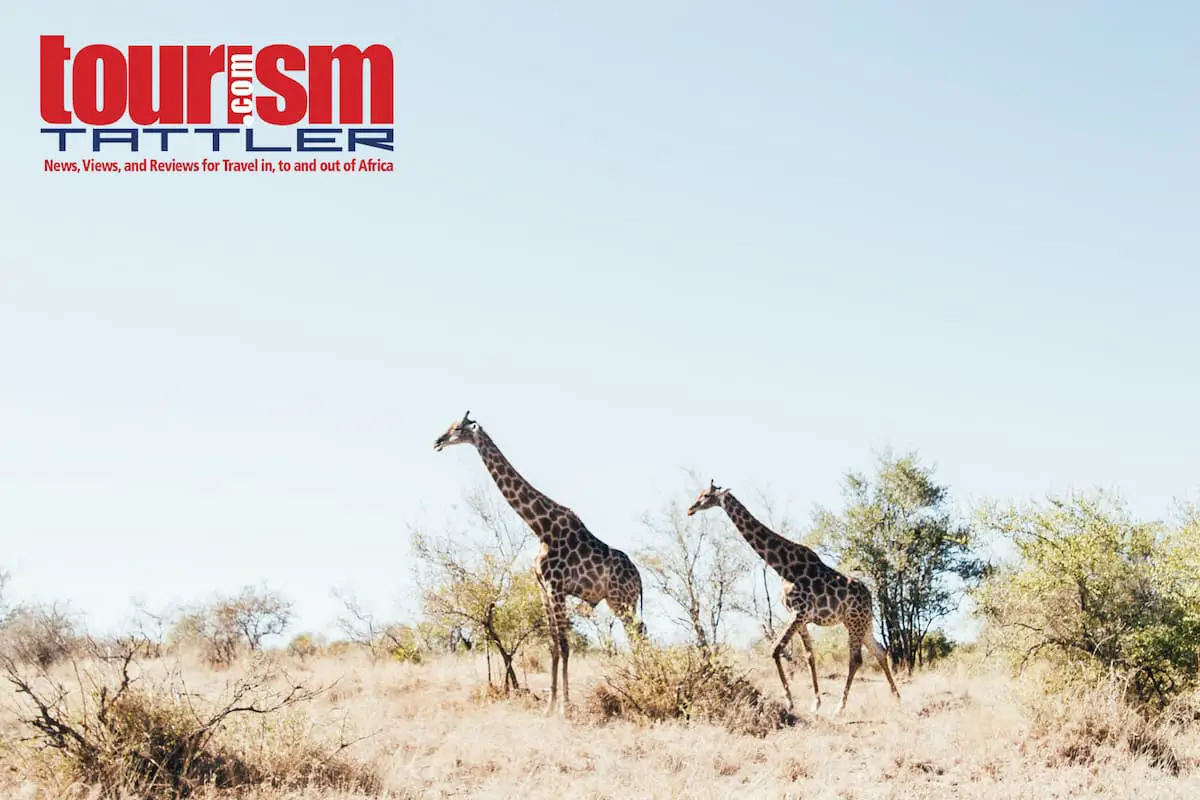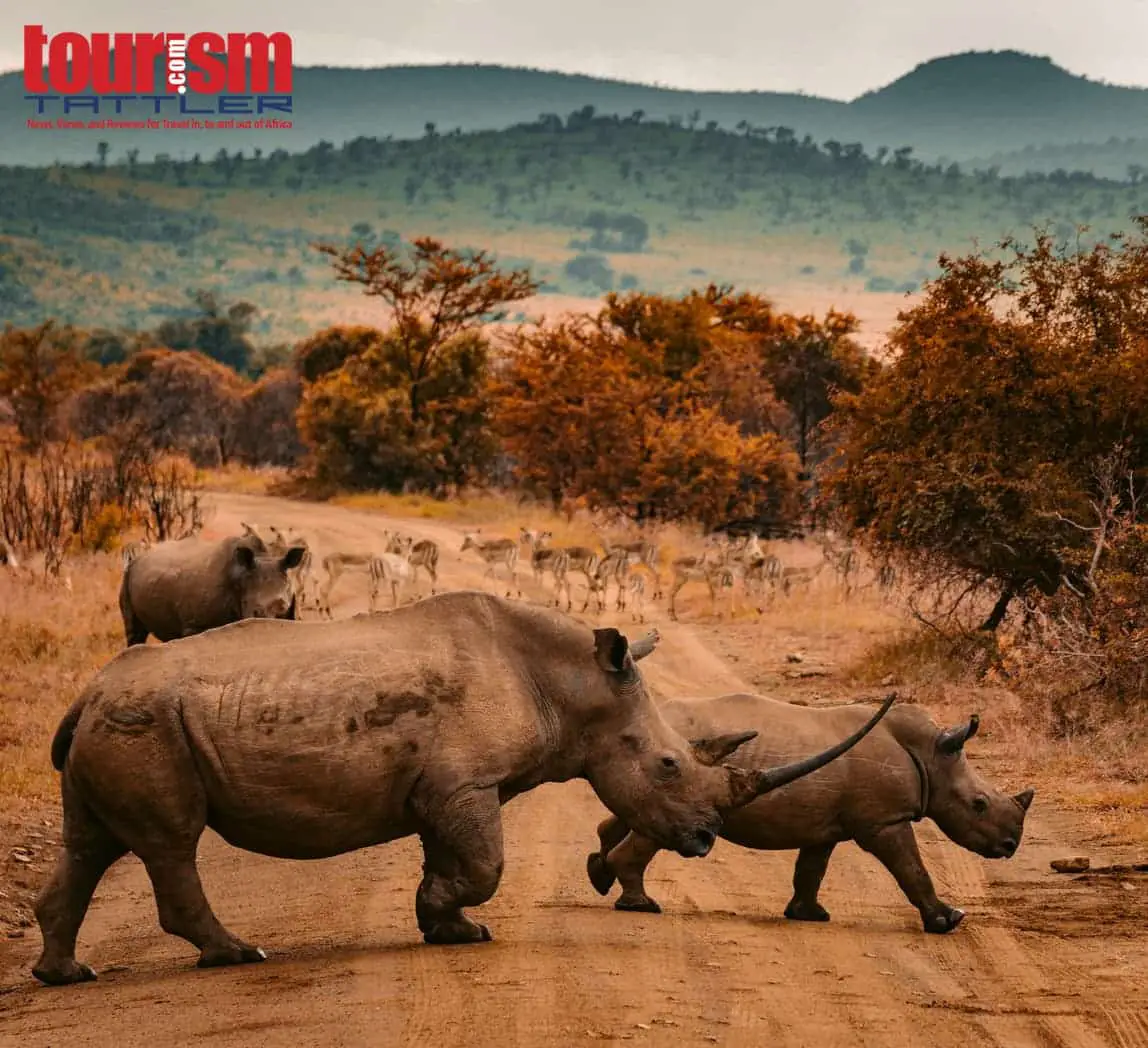Crime in South Africa. Read The Truth.
Search the internet for just about anything to do with travel to South Africa and a crime story is bound to pop up, even though the story is totally unrelated to travel and tourism. Do these negative reports impact inbound tourism and a tourist’s decision to visit the country? Can the local travel trade counter such negative perceptions? By Des Langkilde.
In a letter published in a back-issue of the Tourism Tattler Travel Trade Journal magazine, Peter Hayward of Hayward’s Mobile Tented Safaris asked why tourism offices have a habit of posting the country’s’ general crime statistics on their websites to the detriment of inbound tourism. His comments raised food for thought.
Peter’s argument is that if the perpetrators of this negative publicity were to compare SA’s crime stats with inbound tourist arrival stats and actual crimes committed against tourists, a different picture would emerge.
“A picture that would show that South Africa is, in fact, one of the safest countries in the world to visit.”
Peter Hayward
This statement is not as far fetched as it sounds, considering that even without comparative analysis ‘Total crimes by country‘ ranks South Africa as 7th (after USA, UK, Germany, France, Russia and Japan).
To quantify the effect that negative publicity has on tourism arrivals, South African Tourism conducted a Market Segmentation Study in 2005, which showed that over a five year period 54 percent of inbound tourists were lost through negative perceptions. This percentage would have accounted for 22,25 million potential travellers (4,5 m per year) over the five years who did not consider South Africa because of concerns about safety. To put this figure into financial terms it equates to an estimated loss per annum of R36.45 billion in direct revenue and R81.648 billion in GDP contribution. Not to mention the lost opportunity for job creation (the calculation was done by Grant Thornton in 2009).
Getting back to Peter’s argument, the problem in countering negative perceptions on safety is that South Africa does not have a repository of tourism-related crimes to compare with national crime statistics. Or does it?
Tourism Safety Initiative (TSI)
Let’s go back in time to the post-1994 elections era when South Africa started to experience an upsurge in crime, which by 1996 had reached epidemic proportions. So much so that a national conference was convened in August 1995 to study ways to contain the situation and resulted in big business establishing the Business Against Crime South Africa (BACSA) initiative, a non-profit organization established in 1996 to engage and give support to Government on crime-related matters, and to work with the South African Police Service.
The initial interventions proved to be very successful, and by 2002 BACSA was able to report its successes back to the National Business Initiative (NBI) and to the cabinet. Business leaders decided that their intervention should be reduced and focused elsewhere (such as job creation and poverty alleviation), as the SAPS and Justice Cluster had clearly got their houses in order. In the words of Graham Wright (CEO of BACSA at the time) big business took its “foot off the gas pedal” of safety and security. The focus was placed elsewhere, and inevitably, the crime rate rose again, which prompted BACSA to be re-invigorated.
Many will recall the senseless murder of David Rattray in January 2007, which sent shock waves through the tourism industry locally and internationally. This event, in particular, prompted strong lobbying efforts by the tourism sector to get government and cabinet to cap the rise in crime. Under lobbying pressure, the (then) minister of tourism called a high-level industry meeting during which it was revealed that the minister had initiated a process within his department in August 2006 to develop a safety and security strategy and invited the private sector to participate in its development.
From this meeting flowed the Tourism Business Council of South Africa (TBCSA) forum on crime in April 2007 and by October the national department had released its draft strategy. However, the strategy loosely tasked the private sector with the doing. But in an environment where the cabinet was officially denying the crime wave, the Department of Environment and Tourism couldn’t draft specific crime policy. Everyone broadly agreed to the problem, but no-one was stepping forward to champion the cause.
The problem appeared to be a case of too many chiefs and not enough Indians. The follow-home robberies were at their height, and visible in the media with no let-up in the public debate on crime. Internationally, perceptions were still negative and slowly the “will SA be ready for the 2010 World Cup” chorus was starting to play out in media around the world.
The Southern African Tourism Services Association (SATSA), as the association focused on inbound tourism, and thus the one with members most directly affected by hampered international tourism growth rates, chose to champion the process and create an implementation vehicle.
This led to the formation of the Tourism Safety Initiative (TSI – the travel trade love acronyms!), as a formalized entity operating independently under its own banner, and initially housed and operated by SATSA.
In November 2007, Ms Annelie Barkema was recruited as Project Manager to the TSI on the basis of her experience in and exposure to the Armed Forces, IT, Banking (for the Tourism Sector) and competencies of project management, data management, effective liaison and strength in building networks and maximising the outputs from these networks. Unfortunately, Ms Barkema resigned in December 2012 to pursue her passion in community transformation.
Ian van Vuuren, an employee at TBCSA/TOMSA then worked on the project till May 2016, after which Ms Tebogo Umanah, the TBCSA’s GM for Policy Analysis and Strategic Projects, took over with assistance from Alex Malapane who resigned in February 2017. This resulted in a lot of TSI initiatives and progress being delayed in 2018.
Success Stories
Despite setbacks, the TSI has played a pivotal role in curbing tourism-related crime incidents since its inception. Some notable success stories include:
Gauteng. Between April and June 2007 a spate of follow-home robberies gained significant media attention, which was exacerbated by the high profiled robbery of the SA Ambassador to the UN in June 2007. Information from SATSA/TSI through BACSA to national police management led to a high-level task team being established by SAPS within Gauteng and the TSI was invited to sit on the detective’s task team at weekly meetings to better understand the complexities of the rather unique tourism industry. The interaction resulted in a 97% drop in this type of criminal activity over one year.
North West Province. Working with the North West security task team TSI helped to develop a festive season plan for the Hartbeespoort region by explaining the complexities of the tourism industry to the SAPS task team members. The outcome was an impressive 38% drop in criminal activities over the December 2007 Festive period, as compared to previous years.
Xenophobia. The outbreak of xenophobic violence in 2008 saw police briefing media about “foreign nationals” being the victims of attacks, which led media to interpret this as “foreign tourists”. TSI advised SAPS to refer to foreign nationals as “economic migrants” and refer to the fact that violence was contained and no foreign or domestic tourist deaths or injuries were caused by the violence in a particular district.
Western Cape. In April 2008 the then SATSA Western Cape Chapter Chair, Vernon Kirsten, opened discussions with the Department of Economic Development and Tourism (DEDAT) and Business Against Crime Western Cape to consolidate all tourism incidents under the TSI. By December 2009 TSI signed a Memorandum Of Association (MOA) with Cape Town Routes Unlimited. An MOA was also signed with the Eastern Cape Department of Tourism for TSI to provide expertise, access to a database of reported incidents and to mobilize safety and support services in the event of tourism incidents.
Confederations Cup. ProvJOINT Gauteng, the provincial roll-out of the national joint operation committee, was set into operation in preparations for the 2010 FIFA World Cup. TSI was involved to contribute to an understanding of tourism complexities and establish working processes and procedures.
Diplomatic Community Relations. In the lead up to the World Cup, the diplomatic community-based in South Africa began to ramp up their preparations for the expected numbers of foreign passport holders to arrive for the event and TSI was invited to participate. This not only helped the diplomatic community prepare but also opened doors for TSI into embassies and consulates and established working relationships. This has proved to be invaluable when TSI has had to get involved in victim support efforts with foreign nationals.
2010 FIFA World Cup. During the entire event, TSI’s project manager was the only civilian to sit in the National Joint Operations Centre (NatJOC) of SAPS and SANDF. NatJOC was staffed by 400 members collaborating from various different departments, and TSI was instrumental in coordinating the efforts of Safety and Security Offices. Due to the strength of the relationships that were fostered, TSI was subsequently called upon to provide expertise to visiting delegations from Brazil for the hosting of the 2014 FIFA World Cup. TSI also participated in the creation of safety and security best practice in the hosting of other major tourism events.
Proven Concept
The successful participation in the delivery of safety and security for the 2010 World Cup was the coming of age for the TSI. The initiative was well set to be able to grow from what was primarily a reactionary project, into a pro-active initiative able to deliver increasingly tangible benefits. But this required that the TSI’s resources be ramped up, particularly with respect to staffing, data collection and analysis.
Partnership agreements were sought with Online Intelligence and the Institute for Security Studies to assist the TSI with software for recording and reporting on tourism crime incidents and crime prevention content for its website, which was launched in 2012 and subsequently transferred to the TBCSA website in 2017. An incident management service was also proposed via Dr Simon King’s BlackPlan Incident Management centre, which, unfortunately, never saw the light of day.
Currently, the TSI website has a limited database of tourism-related crime incidents, however, it had been proposed that access is restricted to Tourism Marketing South Africa (TOMSA) registered levy collectors only. Which seems fair considering that it is their voluntary collection of the 1% tourist levy financial contribution that keeps the initiative going.
Funding
Funding appears to be at the heart of the TSI issue. At the time when SATSA managed the TSI, the TBCSA had approved the TOMSA/TSI budget in October 2010, and the first payment from TOMSA to SATSA was only received in November 2011, while the second payment for the 2012 year was only made in August of that year. Funding for the 2013 period, which had been under review with the TBCSA Board since October the previous year, was never approved.
Seeing as SATSA is a member-driven association, it’s Executive Committee resolved that the TSI was becoming a serious drain on its financial and operational resources, and in 2014 asked the TBCSA to take over managing the TSI, which the TBCSA agreed to.
Subsequently, the TSI budget was not approved in 2018, according to Ms Umanah.
Putting the funding issue into perspective.
In 2013, when research for this article was done, the South African Banking Risk Information Centre (SABRIC) had a staff complement of 38 and an annual budget of R30 million. The Petroleum Safety Initiative (PSI) had a staff complement of 3 (plus 2 outsourced Online Intelligence staff), an annual budget of R2.5 million and quantified industry savings attributable to crime reduction of R16 million. The South African Insurance Crime Bureau (SAICB) had a staff complement of 14, an annual budget of R11 million and quantified industry savings attributable to crime/fraud reduction of R25 million.
By comparison, the TSI has a staff complement of 1, and a TOMSA budget contribution of R1 million (2011 and 2012 periods).
Conclusion
For the Tourism Safety Initiative to deliver on its mandate, which includes data collection and analysis on tourism-related crime to counter the negative effects of the general crime statistics, the private sector of South Africa’s travel trade needs to acknowledge ownership and provide support to the initiative. This support can be done in several ways:
1. Register as a TOMSA levy collector.
Visit the TOMSA website or call the TBCSA on 012 654 7525. Depending on the market segment you operate, the levy is applied as follows:
- Tour Operators: R3.00 per person, per tour
- Car Rental: 1% charge per car rental
- Accommodation: 1% charge on room rate
- Travel Agents: 1% charge on agent’s service fee (inbound and outbound)
2. Report tourism-related crime incidents
Visit the TBCSA/TSI website or email info@tourismsafety.co.za or call the TSI support centre on 0861 874 911.
A final word (or two)
For some reason, you cannot register as a TOMSA levy collector online or make a voluntary financial contribution to TSI online via their websites, which would be convenient.
Whilst TSI is a private sector initiative, one has to wonder why the public sector does not see the need to assist in funding. After all, one of the key objectives of the National Tourism Sector Strategy (NTSS) is to “Finetune, manage and monitor the implementation of the tourism safety and security strategy” which under section 4.2 specifically states that the National Department of Tourism is to “Formalise relationships with the Tourism Safety Initiative (TSI)”. What better way to foster a relationship than to inject some much-needed funding?
Copyright: This article may be freely distributed or reproduced provided that acknowledgement is made to TourismTattler.com
Read more on this topic:





